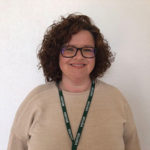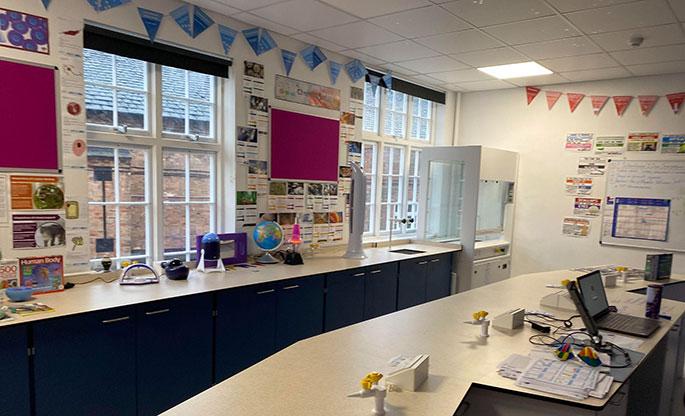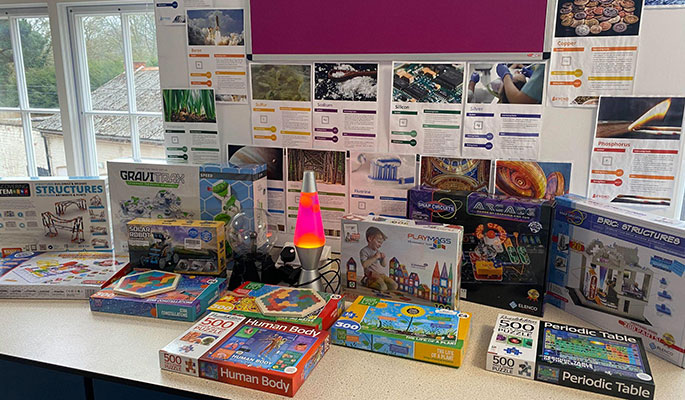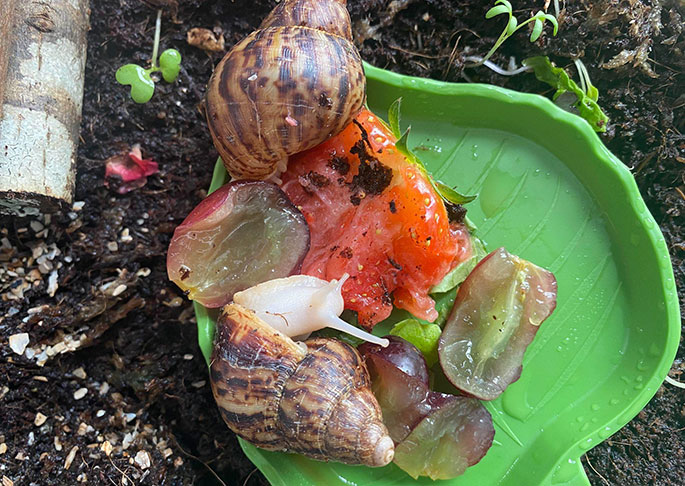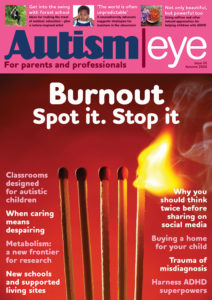Quorn Hall School is a provision for students with social, emotional and mental health difficulties as well as autistic profiles, based in Leicestershire. The provision boasts an impressive, recently installed Science Lab. Below are the thoughts of the Science Teacher from Quorn Hall School, Ms Cartwright on how science supports their autistic students.
As a child, I remember my father letting me stay up late to look at the stars through his telescope. My father was trying to explain to me how peering into the night sky was like peering into a time machine, that all of the light reaching our eyes from these celestial bodies had taken so long to reach us that most of the stars didn’t even exist in the night sky anymore.
As a rather tired five year old, I couldn’t understand what he meant. Light is instantaneous, isn’t it? When I turned my light on because I was afraid of the dark, the light reached me straight away, so how could it be so slow now? So my father rolled a ball past me and asked me to go and collect it and return it to him. I turned around and bravely entered the dark shadows, emerging triumphantly a few seconds later with the ball … to find my father nowhere to be seen.
After panicking for a few seconds, I walked to where my father had been and saw him behind a wall. He explained that he was a star and the ball had represented the beam of light. It had taken so long to reach me that by the time I had retrieved it he wasn’t there anymore, just like many of the tiny pinpricks of light burning brightly in the night sky.
Learning styles
But why has it stuck in my memory all these years? To me, it is because of the concept of ‘learning styles’, the idea that we all learn about our environment and process that information through four main learning styles: ‘Auditory’, ‘Kinesthetic’, ‘Reflective’ and ‘Visual’. Most neurotypical students will employ two or more of these learning styles at any one time. In contrast, I find that neurodivergent students tend to use only one learning style at any time, but that they may jump from one style to another, which I believe is a coping skill for trying to make sense of the world around them.
But this is why I passionately believe that science as a subject supports the learning of our autistic students: because the science lesson can easily employ all four learning styles and so meet the needs of all of our students, providing them with confidence and reassurance, a sense of achievement, that they can ‘do’ science, therefore reducing anxiety and, in turn, helping to reduce challenging behaviours in the classroom.
Full science classes
Science was formally introduced as a subject at Quorn Hall School in September 2021. It’s been a pleasure to see the classroom fill up (and keep) those bums on seats!
For the kinesthetic learners, we have lots of STEM kits to use: everything from magnetic tiles to stick together for our Key Stage 2 learners to solar robots or snap electric circuits for our KS3 and KS4 cohort.
Recently, we collected junk and encouraged each student to create a handwashing device that used 250ml of water, for which 11 of our students earned a BA Crest Award in Science.
We have the National Space Centre visiting with their planetarium soon for our visual learners. Like me 38 years ago, our students will lie under the (artificial) night sky and be transported to alien planets far away as the walls and ceiling of the planetarium light up and show the story of how we get day and night or the life cycle of a star.
Our classroom has lava lamps on the desk to teach about convection currents and thermal energy transfer, plasma balls that can be touched to teach about conductivity and resistance, LED strips to replace the harsh lighting and teach about the spectrum, even Minerva and Albus (our giant African land snails – photo below) help to teach how different animals are adapted to their environments.
A living classroom
The kitchen garden that we are creating provides hands-on experience for our students, planting seeds, digging earth, and helps to be reflective in our learning. The living classroom that we are building out of squash vines, netting and old wood structures will provide a new sensory experience to learn in. The two bee hives will provide honey for our students to learn how to market and sell. The sunflower competition and wildflower seeds that we sow in recycled milk bottles around school teaches responsibility and how to care for the environment and to reuse and recycle.
All these are simple ideas or ‘quick wins’ in the classroom and I hope that they stay with my students like the memory of the ball rolling past my feet all those years ago.
Want to find out more about Quorn Hall? Why not look at our Virtual Tour on our website.











